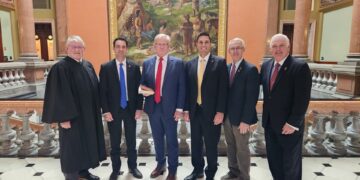“If you build it they will come” is not a good way to allocate transportation dollars. Christian Britschgi reports:
Despite spending millions of dollars on hundreds of miles of bikeways, American cities are seeing a big drop in the number of people who pedal their way to work. That’s according to the latest American Community Survey (a smaller, more detailed version of the U.S. Census), which found declining bike ridership across most American cities last year.
The drop was most pronounced in bike-friendly Seattle, home of the $12-million-a-mile bike lane. In 2015, 4 percent of Seattleites (16,300 people) biked to work. That rate fell to 3.5 percent (14,600 people) in 2016 and 2.8 percent (12,000 people) last year. […]
[B]iking was down in many cities, even those spared harsh winter rains. Take Los Angeles, where biking has been falling for years, even as the city has added bike lanes at a frenzied pace. The city’s2010 Bicycle Plan called for quintupling the number of bike lane miles at a projected cost of $234 million to $437 million. The state and federal governments have chipped in with grants for bike infrastructure. The city has been adding from 30 to 60 lane miles (the number of lanes multiplied by miles of path) of bikeways a year, reaching some 1,200 lane miles—including fully separated lanes, recreational trails, and marked or “sharrowed” lanes—by 2017.
Despite this investment, biking numbers are down. In 2013, some 21,000 Angelenos (1.2 percent of commuters) biked to work. After a spike in 2014, the number of bikers has been falling continuously. Last year, only 17,930 commuters (about 0.9 percent of all commuters) biked to work, according to the new survey data.
[Christian Britschgi, “After Millions of Dollars Spent and Hundreds of New Lane Miles Built, Bike Ridership Is Down Across America,” Reason, September 27]







